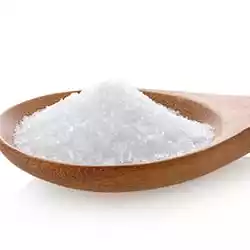IUPAC Name
Sodium 2-Aminopentanedioate
Cas Number
6106-04-3
HS Code
2922.42.20
Formula
C5H8NO4Na
Industry
Food Ingredients
Appearance
White Crystalline Powder
Common Names
Sodium Glutamate
Packaging
25 Kg Bag
Brief Overview
Monosodium glutamate (MSG) is a salt of glutamic acid with molecular formula C5H8NO4Na. It is a white crystalline odourless powder, soluble in water. However, it is not hygroscopic. Glutamic acid is a non-essential amino acid which is synthesized by the body naturally. Glutamic acid belongs to the category of compounds called glutamates which produce very specific taste. Hence, it is commonly used as a food additive for the enhancement of the flavour. Glutamic acid is found in many food items such as cheese, fermented bean paste, soy sauce and seaweeds.
Manufacturing Process
MSG is produced by bacterial fermentation in a process similar to vinegar and yoghurt. Sodium is added in later steps during neutralization. During fermentation, selected bacteria cultured with ammonia and carbohydrates from sugar beets, sugar cane, tapioca or molasses, excrete amino acids into the culture broth from where L-glutamate is isolated.
Food Industry
Monosodium glutamate is a flavour enhancing food additive often used in meat, fast food, and packaged food items like crackers, chips, soups, pre-made gravies, instant noodles, salad dressing etc. It intensifies other tastes particularly sour and salty. MSG is added to food to add Umami flavour and to increase palatability and satisfaction. It is extensively found in processed food including meat, candy, non-alcoholic beverages, baked goods, breakfast cereals, milk products, cheeses, soups, snack foods, fish products and among others. It mixes well with meat, many vegetables, sauces and soups is it enhances other taste active compounds, improving the overall taste of that food product.
Cosmetics Industry
Monosodium glutamate is used commonly as an additive in cosmetic products such as skin care creams, shampoos, hair conditioners etc.
